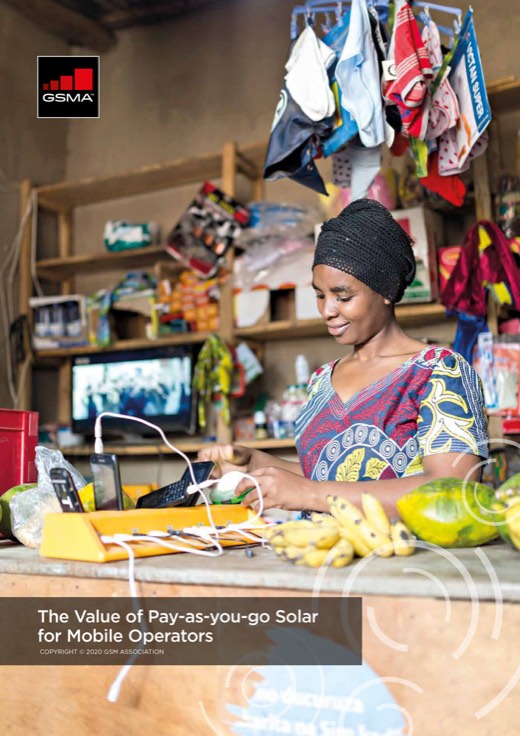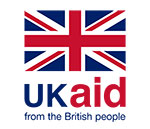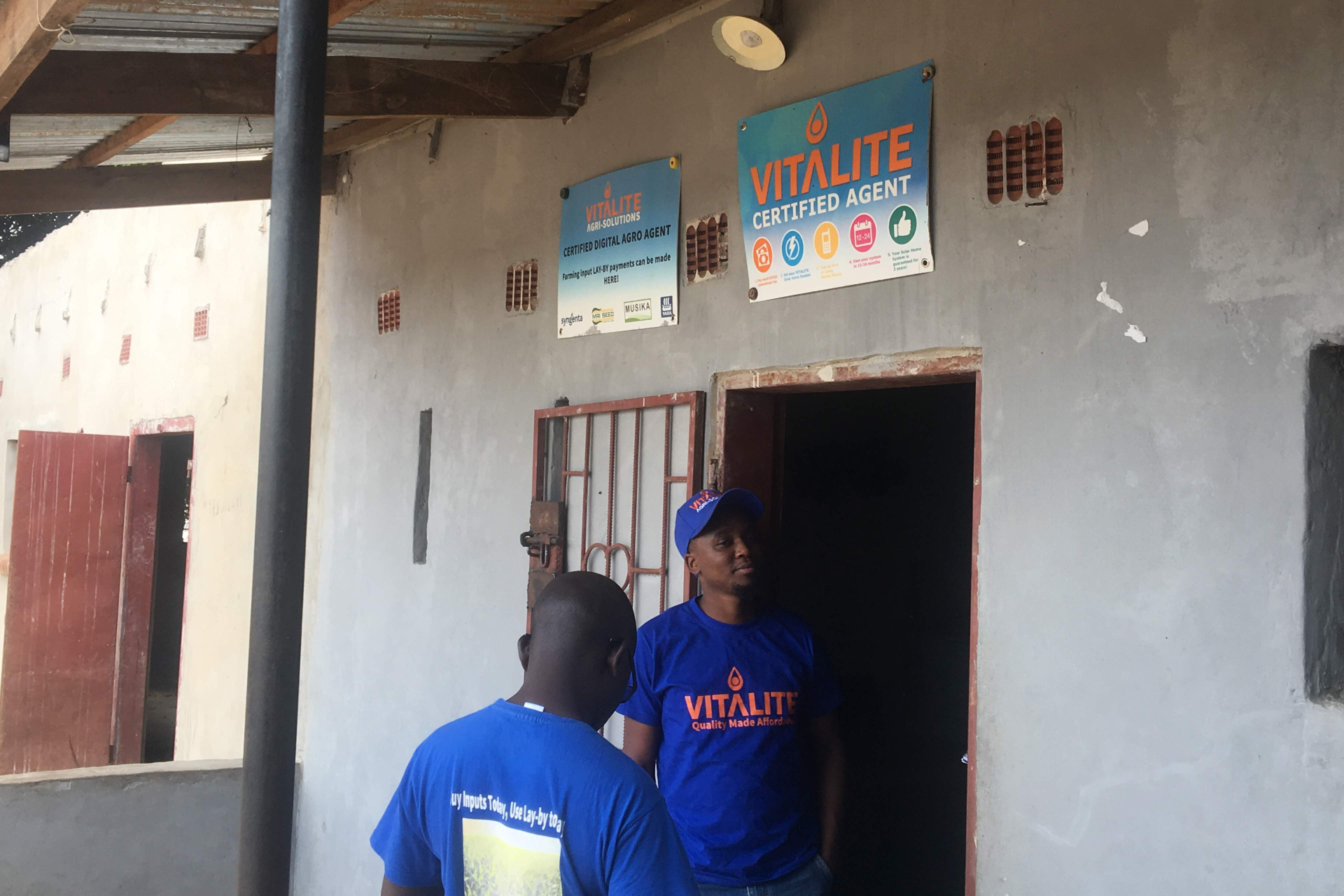What is the value of pay-as-you-go solar for mobile operators?
What is the value of pay-as-you-go solar for mobile operators?
Our multi-country analysis quantifies the value for pay-as-you-go (PAYG) solar models for mobile operators and demonstrates the impact it has on consumer and user behaviour.
Pay-as-you-go (PAYG) technologies, combined with mobile payments, have enabled a new wave of consumer asset financing for low-income customers. PAYG locking technologies, built on machine-to-machine communication, enable service providers to manage credit risk for low-income and unbanked customers. While the growth of mobile money has enabled cost-effective payment collection from remote customers. PAYG solar has emerged as one of the strongest use cases for this technology, and the sector has matured from a handful of pilots to a global industry in under a decade.
The synergies between mobile operators and PAYG solar providers have been clear from the start. Mobile operators provide the fundamental ingredients for PAYG through mobile money and connectivity. On the other side, PAYG solar boosts operator revenues from mobile money transactions and other services.
A multi-country, multi-operator study in Africa
The rapid growth of pay-as-you-go (PAYG) solar has been enabled by mobile money and mobile connectivity that allows customers to pay by instalments, and companies to remotely control and monitor the solar home systems (SHS). And in turn, the PAYG solar industry has helped to drive the adoption and use of mobile money, by giving customers a regular and essential use case, and ensuring they have a convenient and safe power source to charge their phones.
This research focuses on the African continent where most of the mobile money enabled PAYG solar units have been deployed.
Taking a multi-country and multi-operator approach, data was collected from several mobile network operators (MNOs) across West Africa (Benin and Cote d’Ivoire), East Africa (Rwanda and Uganda), and Southern Africa (Zambia).
It was important to assess if the value measured differs greatly from one country to another, or if trends were consistent across different contexts and geographies.
A simple, four-step analysis
We conducted a four-step analysis that examined indicator data aggregated by cohorts of customers over time and compared this between groups of PAYG customers and non-PAYG customers.
PAYG solar customers increase their frequency of mobile money transactions
In every country we observed a dramatic increase in the frequency of mobile money transactions right after clients started using PAYG solar services.
Figure 1
Frequency of mobile money transactions in Benin before and after adoption of PAYG SHS
Figure 2
Frequency of mobile money transactions before and after adoption of PAYG solar vs control groups in four markets
Transaction frequency increases for transactions beyond energy
Data from multiple MNOs shows that the increase in mobile money transactions reflects broader usage of mobile money, not just for solar payments.
Figure 3
Frequency increase per type of transactions before and after adoption of PAYG solar
PAYG services bring value into the digital ecosystem
The type of transactions – cash-in, cash-out, merchant payment, person-to-person payment, airtime purchase – all grew more for the PAYG group compared to the control group.
Increases in person-to-person transactions reinforces the point that PAYG adoption drives mobile money usage across transaction types, and that more value is circulating in the digital ecosystem.
Figure 4
Increased frequency of cash-in
The adoption of high-value financial products in Uganda
In Uganda, the mobile operator collaborated with a national bank to launch advanced financial products, including savings and loan services.
PAYG customer cohorts increased their use of advanced financial products at a higher rate than the control group.
The adoption of advance financial products is encouraging as it demonstrates that PAYG can accelerate customer journeys towards financial inclusion.
Figure 5
Increased penetration rate of lending and savings products
PAYG attracts new and previously inactive users
PAYG providers play an important role in driving mobile money penetration and providing customer education on mobile money in remote rural areas.
In Zambia and in Rwanda, roughly one-third of the PAYG clients registered or reactivated mobile money accounts with the selected mobile operator.
In Uganda and Benin, this figure was roughly one-fifth. In Uganda, this was despite mobile money taxation policies introduced over the course of the study, which did decrease mobile money adoption, as shown in the UNCDF study.
Figure 6
Proportion of PAYG customers that newly subscribed to, or re-activated, their mobile money account with selected MNO
PAYG solar may increase data usage, and opens the door to PAYG smartphones
Increasing mobile internet usage is a high priority for mobile operators seeking to stimulate phone activities among their clients. The penetration rate of internet service among PAYG users was used to assess this.
Further research is needed to understand the exact reason why PAYG impacts data usage. However, it could be related to customers being able to charge phones more regularly, or as a result of improved digital literacy from using PAYG services.
Energy providers can, and want to, leverage their customer relationship to continue to offer services after a customer has completed the payment on their first solar home system. PAYG smartphones, associated with increased mobile usage, are a good example of this trend and are developing fast in those markets.
Figure 7
Mobile internet penetration rate before and after adoption of PAYG
PAYG is driving new revenue streams for mobile operators
MNOs Average Revenue per User (ARPU) provides a granular view of individual customer behaviour, and allows mobile operators to track revenue sources and growth.
Mobile operators, particularly in emerging markets, have continuously tried to raise ARPU by launching new service offerings, building more strategic partnerships, and tapping into new revenue streams. The PAYG industry represents such a strategic opportunity.
Overall, PAYG adoption appears to amplify the market trend of rising data and mobile money revenues, further catalysing mobile operators’ transition from a reliance on airtime as a main revenue source.
Figure 8
Overall mobile ARPU increase from PAYG subscribers vs control group
Future opportunities for the PAYG model and for strengthening partnerships with mobile operators
PAYG solar significantly drives mobile money adoption and transaction frequency, not only for solar payments, but for a broader range of transactions, therefore acting as a catalyst for digital and financial inclusion. The study also shows that PAYG solar clients are important for mobile operator ARPU, not only by increasing mobile money usage but also voice and SMS activities and mobile internet usage.
PAYG models have expanded beyond the household solar kit use case. The full value of this opportunity for mobile operators may lie just ahead, as PAYG models are being rapidly expanded to broader energy appliances, and to other service models. Increasingly, PAYG solar companies are financing other appliances like smartphones and seek to impact income generation through agricultural infrastructure like water pumps and processing machinery. PAYG models are also permeating urban services like clean cooking through PAYG LPG and piped water services.
For the mobile industry, we hope these findings support three key actions toward PAYG partnerships:
- For mobile operators already working with PAYG solar providers, there’s a need to look at how deeper collaboration with these partners can further drive these mutual benefits;
- For all mobile operators, investing in mobile money as a full business platform is essential to attract innovative service providers, and allow them to quickly and affordably put it to work; and
- For all mobile operators, they can gain unique business intelligence on their partnerships from their data.
Watch our latest webinar

The Value of Pay-as-you-go Solar for Mobile Operators
Related blog posts





